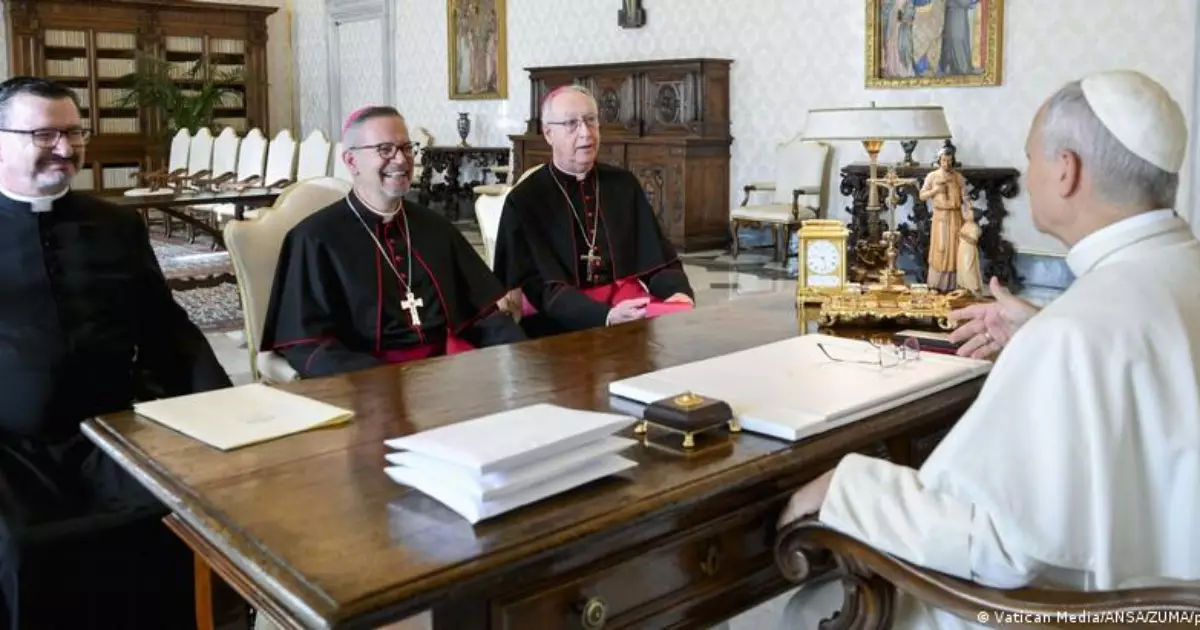
More than 60 artifacts stored by the Vatican for more than a century have been handed over to Canadian bishops with a promise to hand them over to Indigenous peoples. The action comes three years after Pope Francis’ apology. The Vatican returned 62 Indigenous artifacts to Canada this Saturday (11/15). Among the items are Inuit kayaks, wampum belts (beads made from seashells), war clubs and masks, many of which were in the Vatican Museums more than a century ago.
The Holy See said the articles are kept in the Vatican’s ethnographic collections and were handed over to the president of the Canadian Conference of Catholic Bishops (CCCB) during an audience at the Apostolic Palace.
“Pope Leo XIV wants this gift to be a concrete sign of dialogue, respect and fraternity,” the Vatican said.
“Work will proceed as soon as possible to transfer these artifacts to Canada’s National Indigenous Organizations (NIOs),” the CCCB reported. “The NIO will ensure that the relics are returned to their original communities,” the Canadian bishops said in a statement.
“All of these artifacts are sacred objects and are critical to the healing process for many residential school survivors,” Bobby Cameron, president of the Federation of Sovereign Indigenous Peoples of Saskatchewan, a Canadian province, told Canadian public broadcaster CBC.
Canada’s ambassador to Rome told CBC News that the items are currently being stored in Rome and are expected to be returned to Canada on Dec. 6.
How did the relics end up in the Vatican?
Canadian Catholic missionaries sent these artifacts to the Vatican during a period of cultural repression, forced conversion, and abuse within the residential school system for Indigenous children.
The Inuit kayak was one of 100,000 items sent to Rome from around the world for the Vatican Missionary Exhibition held by Pope Pius IX in 1925.
Some items were sent even earlier, such as wampum “donated” to Pope Gregory XVI in 1831.
The Vatican then took custody of the items. More than half of the artifacts on display are housed in the Museum of Missionary Ethnology, which later became part of the Vatican Museums in the 1970s.
In 2022, then-Pope Francis made a “penitent pilgrimage” to Canada to issue a historic apology for decades of abuse of indigenous children in the country’s Catholic schools, which he described as “genocide.”
During that trip, Canada’s indigenous communities called on the Vatican to return culturally significant items taken decades ago. Francisco subsequently announced that he would accept compensation on a case-by-case basis.
Refund procedure criticized
The Vatican said in a statement that the “gift” of Indigenous artifacts to Canadian bishops represented “a concrete sign of dialogue, respect and fraternity.”
Although the Vatican claims these artifacts were provided to the Vatican as “gifts” in the past, historians and indigenous groups question the extent to which they were donated voluntarily, given the context of forced assimilation, promoted by religious orders in collaboration with the Canadian government.
However, some Indigenous leaders in Canada have criticized the restitution process.
“Indigenous peoples need to see what’s actually out there, and we need to identify what belongs to which nation,” said Cheyenne Razor of the Akwesane Community Rights Research Bureau, part of the Mohican Nation.
“Many goods have been taken and each indigenous person will be able to identify what belongs to us. There are certain identifiers that will allow us to know what belongs to each community.”
Canadian Foreign Minister Anita Anand celebrated the news.
“This is an important step that honors the diverse cultural heritage of Indigenous peoples and supports continued efforts towards truth, justice and reconciliation,” she said on social media.
jps (DW, AFP, ots)



